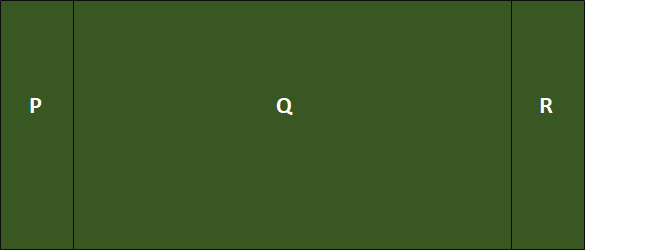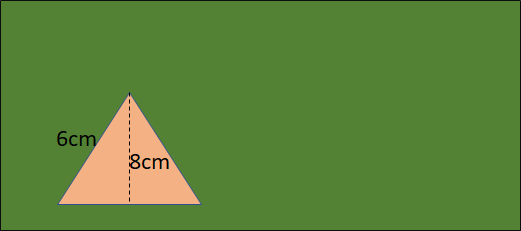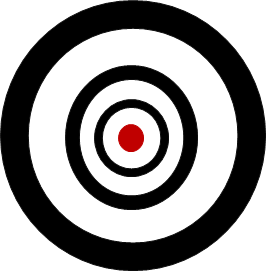What is geometric probability?
Geometric probability deals with finding the likelihood of occurrences related to geometric parameters such as length and area.
Before you begin your journey to geometric probability, the basics of probability must be understood.
What is probability?
Probability tells us how possible an event or a combination of events can occur.
The probability values are between 0 and 1 and it is expressed in terms . This means that the outcome can be 0 when there is no likelihood of that event occurring and 1 when there is every likelihood that such event occurs.
The probability of an event Z occurring is often written as P (Z). To determine the probability of an outcome, the total numbers of outcomes must be known. The total number of outcomes is known as the sample space. Once the sample space is derived, a proportion of the event out of the sample space is found. This is calculated by dividing the event by the sample space.
8 red, 9 green and 3 yellow balls are put inside a box. Find the probability of picking a green ball.
Solution
Firstly you need to solve for the sample space:
8 red + 9 green + 3 yellow = 20 balls
So, the question is actually asking you that out of these 20 balls, how likely would you pick a green ball?
Remember there are 9 green balls; so, we are looking at 9 green balls out of 20 balls.
Types of geometric probability
Herein, you shall be learning two types of geometric probability.
Length probability
This is also know as a 1-dimensional probability. The likelihood that an event occurs within a distance out of a longer distance can be determined by finding the ratio between the possible distance and the total distance.
Let's take the following line.

If the distance BC is within a total distance AD, then, the probability that the event occurs in BC becomes
.
Length probability helps you find the possibility of an occurrence in one-dimensional systems, this way, you are able to weigh your options and make reasonable judgments.
Length probability tells you the chances of an event occurring within a one dimensional system.
A selection is to be made between points G and F as seen below

Find the probability that selection falls in
- GH
- HF
- FJ
- GH or HF
Solution
Firstly the sample space between G and F has to be calculated.
From G to F, the distance
Hence, the sample space is
a. In order to find the probability that the selection falls in GH, we calculate first the distance GH,
,
Hence,
b. In order to find the probability that the selection falls in HF, we calculate the distance HF,
,
Hence,
c. In order to find the probability that the selection falls in FJ, and before calculating the distance FJ, let us note that the region FJ is not within GF, so the fact that FJ occurs in GF is zero, hence
.
d. In order to find the probability that the selection falls into GH or HF, it is a union of two occurring events. Thus, we have,
but, , calculated in part a, calculated in part b.
We have , thus
The Stagecoach bus runs every 15 minutes at Frimley. It takes John 10 minutes to get to school from the bus stop. If John arrives at the bus station at half-past seven and is expected to get to school at quarter to eight.
What is the probability that he reaches his school on time?
Solution
To find out John's chances of reaching school at the appropriate time we need to find the best time the bus can arrive for John to meet up with school at 7:45. To calculate this we need to know the longest time John would wait at the bus stop before he starts running late. We have,
Time from Bus stop to School = 10 minutes.
John gets to the bus stop at 7:30 and has to be in school at 7:45. This means that John still has 15 minutes (i.e. 7:45 - 7:30) to meet up.
If the bus were to come at exactly 7:30 which is when John gets to the bus station it means John would arrive school at 7:40 which makes him 5 minutes early. So, John can only wait till 7:35 (i.e. 7:30 + 5 minutes) before he gets late to school.
John's favorable waiting time is thus 5 minutes, and the maximum total time he could wait for the bus is 15 minutes.
Therefore,
A circular path has been divided into 3 regions, arcs A, B and C. Find the probability a seedling growing a circular path is found in arc B if the arc length of A is 5cm, the arc length of C is 12cm and the radius of the circular path is 7cm. Take .
Solution
To determine the probability of the seedling growing in B we need our sample space. The sample space is the total distance around the circular path.
The total distance around the circular path is equal to the circumference of the path. But
Circumference of the circular path,
so the total distance around the circular path is 44 cm.
Now, we need to know the arc length of B having given the arc lengths of of A and C as 5cm and 12cm respectively.
But the total distance around the circular path is 44cm, thus
So the probability that the seedling is found in B is
Area probability
Area probability (also known as 2-dimensional probability) involves the possibility of an outcome occurring in a given area over a larger area.
Imagine that a volleyball lawn is divided into 3 parts P, Q and R.

When you are to predict what area of the lawn the volleyball would hit, you need to consider the area of the parts P, Q and R separately. Thus,
.
Area probability tells you the chances of an event occurring within an area.
The figure below is a rectangular lawn with a length 15cm and width 30cm. A equilateral triangle sandy court has been created inside the lawn. If a golfer hits a golf into the lawn, what is the probability that the golf hits the sandy court?

Solution
Step 1.
We find the area of the rectangular lawn.
Step 2.
We find the area of the equilateral triangular sandy court.
Step 3.
We find the probability that the golf hits the sandy court.
The figure below is a target. If its longest and shortest radii are 56cm and 7cm respectively. Find the probability of an arrow not hitting the bull's eye (the red spot). Take

Solution
Step 1.
We Find the area of the whole target. Since it is a circle, the longest radius is used to find its area.
Step 2.
We find the area of the bull's eye (red region). Knowing that the bull's eye (red region) is the smallest circle, that means it has the smallest radius. Thus;
Step 3.
We find the probability of hitting the bull's eye. Let B be the event hitting the bull's eye.
Step 4.
We find the probability of not hitting the bull's eye. So B' is the event of not hitting the bull's eye, hence
, so
Geometric Probability - Key takeaways
- Probability tells us how possible an event or a combination of events can occur.
- The total number of outcomes is known as the sample space.
- Geometric probability deals with finding the likelihood of occurrences related with geometric parameters such as length and area.
- Length probability compares the possibility of an outcome within a distance out of a longer distance.
- Area probability involves the possibility of an outcome occurring in a given area over a larger area.












